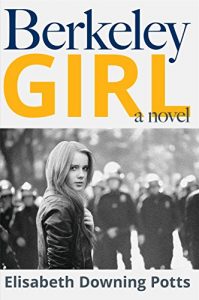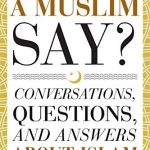Today’s Sunday Snippet is from the book Berkeley Girl: A Young Woman’s Journey Through the Chaos of the 60’s.
About Berkeley Girl
Through a haze of drugs, rock and roll, and riots in the streets, MaryBeth Malone never stops asking the most important question of her life — Where do I belong?
Bored and uninspired at a small college in 1967 L.A., MaryBeth makes a life-changing decision to transfer to U.C. Berkeley, where she meets a myriad of characters who both complicate and enrich her life — a red-lipped house mother who rules the roost like an old world potentate, the drunken frat boys next door, and various pedantic professors. All the while she is trying to help her promiscuous roommate who carries a terrible secret about her past and an old friend who returns from Vietnam drug-addicted and broken.
And then there’s Danny, a dedicated anti-war activist who pulls her into his work with the Resistance Movement. But the relationship between MaryBeth and Danny proves to be as turbulent as the world around them, as they try to balance their fight against the Vietnam War with their love for each other and the unexpected intrusion of a new friend.
Emerging from the cauldron of the 60’s, MaryBeth finds herself forever changed.
Chapter 40 of Berkeley Girl
The battle raged on all day, with Telegraph Avenue at the epicenter. When protesters burned a police car, officers peppered the crowd with birdshot. One person who was hit crawled under a Volkswagen bus, just before the police shattered all its windows. Another demonstrator, shot in the back as he tried to run away, fell on the sidewalk right in front of us.
In the afternoon a few Alameda County Sheriff’s Deputies replaced the birdshot with the more lethal buckshot. On the rooftop of the Berkeley Repertory Theater on Telegraph, Alan Blanchard, the assistant manager, was permanently blinded by buckshot. I’ll never forget the picture of him, a few days later in The Berkeley Barb, hands covering his eyes, blood running down his arms.
Nearby, bystander James Rector was shot four times and died days later from a pellet lodged in his heart. Ten people were shot by the sheriffs’ deputies, but not one Berkeley policeman fired a gun, and no one in the crowd shot at the police.
That night, at the request of County Sheriff Frank Madigan, but without a request from Berkeley’s Chancellor Heyns, Governor Ronald Reagan called out the National Guard to “…clean up that mess in Berkeley.” The Guard, the deputies, The Highway Patrol, and the police occupied Berkeley for 17 days, many of them bivouacked at People’s Park. “If there has to be a bloodbath,” Reagan said later, “then let’s get it over with.”
For about a week during that time we were awakened every morning by the thwop-thwop-thwopping of the blades of the helicopters that circled overhead, indiscriminately dumping tear gas on us as we ran to class. Rallies had been forbidden, but one was forming the afternoon Dominic and I arrived at the corner of Bancroft and Telegraph, and found a phalanx of National Guardsmen lined up, rifles ready, all along Bancroft Avenue, preventing access to or from the campus. Other guardsmen had sealed off Sather Gate, as the Highway Patrol locked up the Student Union. Before we knew it, thousands of us, including shoppers and University employees, found ourselves surrounded on all sides.
Dominic and I joined a group of people lining up to face the National Guard. At first, both sides just stood there, staring across the imaginary line between us, then the individual epithets started flying. “Pigs!” “Get off our campus!” “Power to the people!” A girl in a long, wispy dress stepped forward and planted a daisy in the barrel of one of the guardsmen’s rifles. He smiled, and she hugged him. The crowd cheered, but was soon drowned out by the whir of helicopter engines, this time hovering so low that they made the ground vibrate underneath us. When the pilots started spraying gas, everyone scattered. I was choking, my eyes and throat burning, the taste of copper again filling my mouth. Out of the corner of my eye, I saw Guardsmen strapping on their gas masks. One of them gave his mask to a woman who had fallen in the street.
It was then that the thick chemical cloud completely enveloped me, and I could barely see where I was going. People around me were throwing up. Some panicked and tried to push their way through the police lines, stumbling and falling when they came face-to-face with the butts of the guardsmen’s rifles. Others headed for campus and found shelter in buildings that hadn’t been locked. I grabbed Dominic’s hand and we made our way to a narrow passageway between Zellerbach Hall and the student government building. We pushed through the space to Bancroft Avenue and ran. Scrambling for shelter, we passed a wood-shingle house where a girl stood in the doorway, one hand covering her mouth, the other motioning for us to come in.
Her tiny house was filled with people, in various stages of distress, all coughing. When she figured that no one else could squeeze inside, the girl shut the door and began wetting paper towels for our eyes.
“It’s far out of you,” one guy said, “to take us all in like this.”
“We’ve got to help each other,” the girl said, handing Dominic a wet paper towel that he pressed to my face.
After a while, we all began feeling better and started talking, comparing notes about the siege. Someone asked about my face, just above the right cheekbone, that had, by now, turned black and blue from my fall on the roof a few days before. A guy with his arm in a sling told about how he’d fallen and broken it when a Guard line had suddenly turned and marched into a group of demonstrators.
We arranged ourselves in a circle on the floor, and one of the guys lit a joint, took a toke, then passed it to the person next to him. Someone else lit another one and passed it in the other direction. A couple more joints were sent around, then we spontaneously joined hands as one guy started singing “Power to the People.” Someone else led us in “All You Need is Love.” We sang it till we were hoarse, then hugged each other before going back out into the insanity. There were only about twenty-five people in the little house that day, but hugging them felt like I was embracing my entire generation.
The battle continued on in the streets of Berkeley for several weeks. Things were changing so fast here and in the rest of the country as well that no one could fully grasp exactly what was going on. What did it all mean? I wasn’t really sure. But what I came to realize during that time is that being part of this battle had changed me, changed me into the kind of person who would never again be afraid to stand up for what I believed.
***
If you liked the snippet you just read, you can buy your own copy of the novel Berkeley Girl on Amazon
On Tuesday the 15th of May 2018, the author of Berkeley Girl comes on The Segilola Salami Show to talk about her writing journey. Please subscribe to the Segilola Salami Show podcast if you have not already done so.





